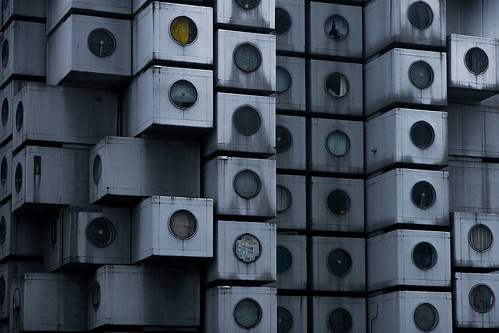





 1 Sangath, B. V. Doshi, Ahmedabad, India - Consider the use of vaults in a semi-subterranean structure
1 Sangath, B. V. Doshi, Ahmedabad, India - Consider the use of vaults in a semi-subterranean structure 2 Berlin Holocaust Memorial, Peter Eisenman
2 Berlin Holocaust Memorial, Peter Eisenman 3 student project?
3 student project? 4 Tadao Ando, Collezione
4 Tadao Ando, Collezionehttp://www.flickr.com/photos/kwc/sets/72157594466733400/
See more in http://silalahi.net/internal/thesis.html
 5 Kunihiko Hayakawa's Labyrinth
5 Kunihiko Hayakawa's Labyrinth See more in http://silalahi.net/internal/thesis.html
 6 Arakawa's Reversible Destiny House
6 Arakawa's Reversible Destiny HouseSee more in http://silalahi.net/internal/thesis.html
Examples 2 - 6 show the emphasis on a labyrinthine layout - What role do openings have in this?
hasan fathy's works might be an inspiration for students working with the idea of a cavernous quality and with massivness. Note how the thickness of the wall is emphasized through the arches, the in-built furniture and its connections with windows.
http://www.fathyheritage.com/album-1138944.html Nakagin Capsule Tower
Nakagin Capsule TowerFor students interested in the idea of stacking modules with openings to create a multidirectional enclosure


 Origami inspired house, Tokyo, Yasuhiro Yamashita, Atelier Takuto
Origami inspired house, Tokyo, Yasuhiro Yamashita, Atelier Takutohttp://www.trendir.com/house-design/japanese_homes/?start=15
This house emphasizes the idea of folding. It shows how the strategy of folding can create strategically placed openings that are integrated into the fabric of the structure - It is not a simple subtraction from the mass of the building.


 Window Less House
Window Less Househttp://www.curbly.com/DIY-Maven/posts/5921-window-less-house
Light can be diffused through the use of courts, paths, gaps and bridges - Similar to Geoffrey Bawa House in which courtyards provide majority of the light coming into the habitable spaces










































